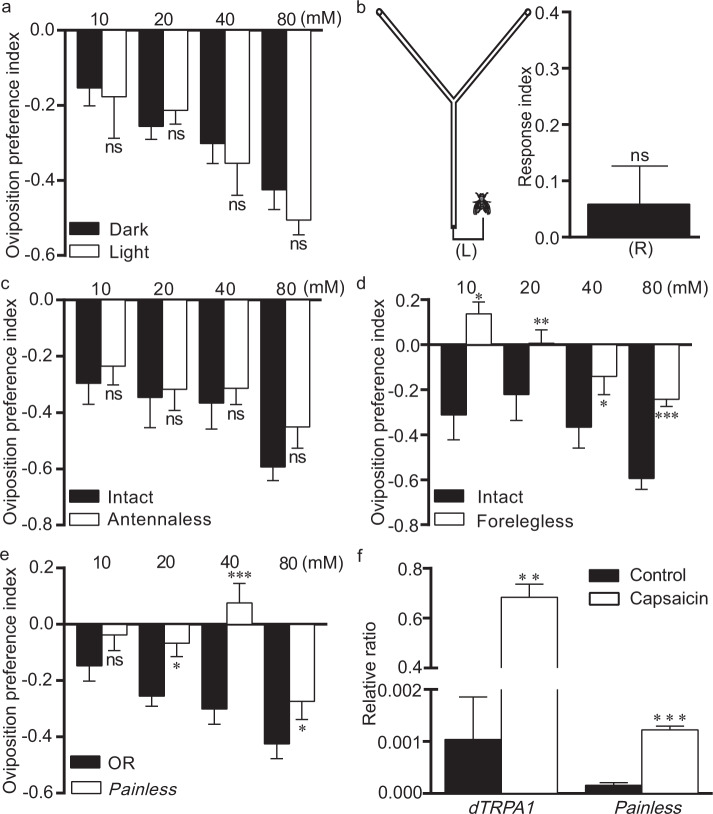Figure 3.
The pain-sensing system mediates ovipositional aversion to capsaicin. (a) Vision is dispensable in the ovipositional repellence of capsaicin. For vision, wild-type flies in darkness and light were used. n = 6–15. (b) Olfaction is not required for ovipositional aversion to capsaicin. Schematic drawing of the Y maze olfactory assay used for olfaction assays with capsaicin (L) and the response index for capsaicin in the Y maze olfactory assay (R). (c) Olfaction is not required for ovipositional aversion to capsaicin. Wild-type females with surgically removed antennae were used, and the oviposition index was evaluated. n = 6. (d) Gustation/nociception is required for ovipositional aversion to capsaicin. The forelegs of flies were surgically ablated, and the oviposition index was quantified. n = 6. (e) Nociception mediated the ovipositional avoidance of capsaicin. (f) Capsaicin activated the expression of pain-associated genes in wild-type flies. n = 6–15. The independent samples t-test was used to assess the mean deviation within conditions. Mean ± S.E.M.; symbols: NS p > 0.05; *p < 0.05; **p < 0.01; ***p < 0.001.

